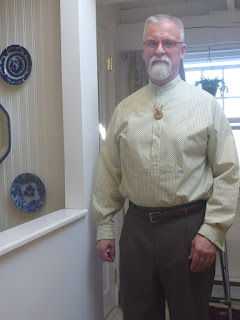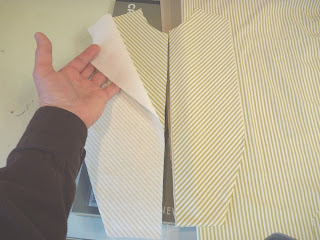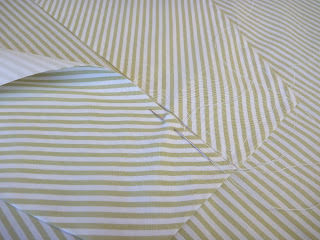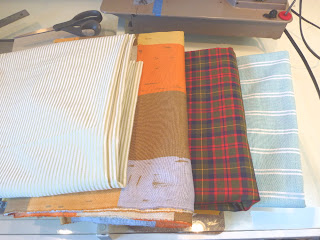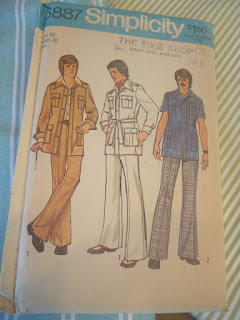It's a wrap. The Victorian shirt, Folkwear #202, is done. I'm sorry for the poor quality of the photos. It was a very dreary day here in Maine, so the combination of low light and a very dark purple shirt made it difficult.
Still, wearing this shirt makes me feel like a king! The fabric has wonderful heft and a fluid drape. The color I adore. The cufflinks are fun and give me a reason to haunt Etsy for more. But most importantly, it really fills a gaping hole in my wardrobe. This is the shirt I need to wear to a party or, God willing, out on a date.

The single French cuff is from David Coffin's shirtmaking book. It's not as bulky or ostentatious as the doubled back variety, which really needs to be worn with a jacket in my opinion. This option lets a guy have a little fun with his clothes without looking stupid. Trust me, we care about that stuff. I added one of the little glass buttons to the placket to hold it shut. A little detail that actually serves a purpose.
There's some interesting construction with this shirt. The placket formation ends up producing a box pleat below it. I'm no spring chicken and I have a bit of a belly. The combination of a box pleat forming just below the sternum and a belly isn't exactly a good thing. Think maternity wear. To keep the pleat under control I stitched it "shut" below my belt line. I would suggest this to anyone who isn't going to be wearing this as a nightshirt.
I'll be hearing confession in the kitchen in 15 minutes!
When the occasion calls for pulling out all the stops I can add my shawl collar brocade vest. Now it's a party!
It's also the perfect way to sport the gorgeous steampunk pocket watch that my daughter gave me for Christmas.
To recap, here are all the changes I made to Folkwear #202
1. I shortened it by 4 inches, and next time will shorten it by 5. I truly think this pattern was designed for women to wear as a tunic or dress.
2. I shaped the back and consolidated all of the pleats into a center box pleat.
3. I did a sloped shoulder adjustment. It could use just a touch more I think, but I would definitely have to lower the neck opening for that.
4. I added a sleeve placket (with a buttonhole) and again reduced the number of pleats.
5. I redrafted the cuff to accommodate cufflinks.
6. I moved the "x" topstitching from the placket down below the waistline to control the front box pleat.
Thanks to everyone who made this project possible!
Credits:
Olive wool trousers Jos A Bank
Charcoal wool trousers Brooks Brothers
Fragrance Boucheron pour homme








